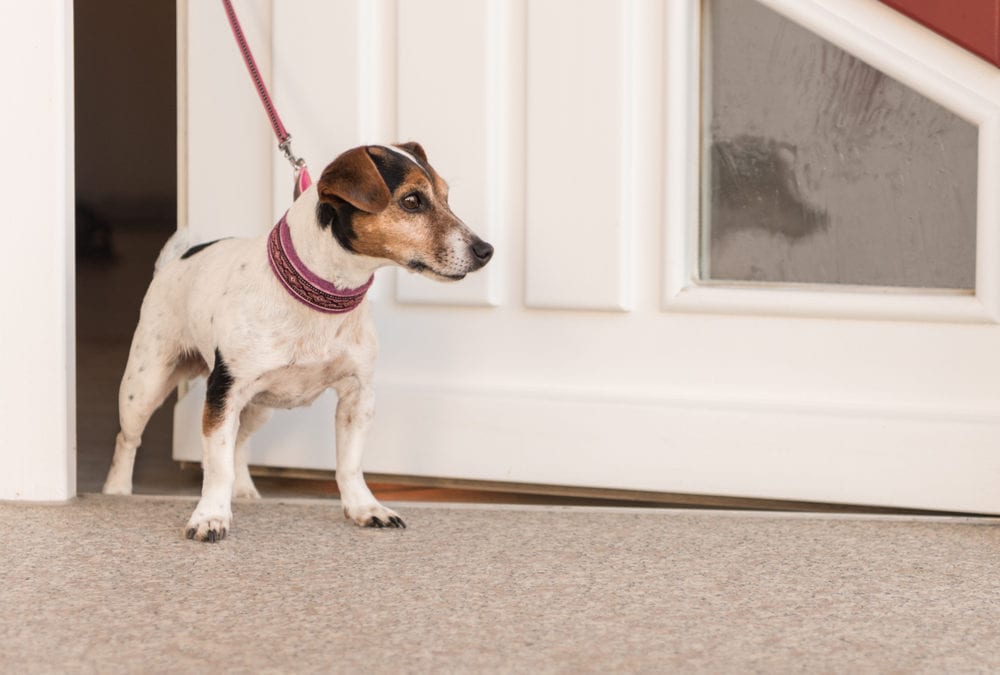Anxiety and fear are detrimental to your furry companion’s quality of life. If your dog is anxious on walks, if your puppy is scared to go outside, or if your dog is afraid to go for a walk at all, it can be physically and emotionally taxing for both of you.
Anxiety is caused by many things, some of which include lack of socialization, separation, aging, or genetic predisposition. If your pet is afraid, it can impact many aspects of their day-to-day needs, including exercise during those important daily walks.
The team at Union Lake Pet Services addresses pet anxiety and what you can do if your dog is anxious on walks.
Symptoms of Anxiety
When your dog is prone to anxiety, you may notice behaviors that accompany the anxiety. Anxious dogs can be reactive, meaning that they are unpredictable around other pets and people, or in situations that lead them to fear. Reactive pets generally suffer from anxiety.
Pets with anxiety display one or more of these symptoms:
- Aggression
- Separation fears
- Urinating or defecating in the home
- Panting
- Pacing
- Destructive behavior like chewing
- Excessive barking or whining
- Shivering and shaking
- Depression
These symptoms can reduce your pet’s quality of life and impact their overall health. The good news is that there are soothing techniques, medications, behavior modification, and other treatments that can alleviate anxiety in pets. Contact us if you’d like a behavioral consultation.
Your Dog is Anxious on Walks: Triggers Vary by Dog
If you’ve ever experienced strong anxiety, you know it can be irrational and overwhelming. You can empathize with what your dog is feeling. Ignoring it doesn’t work. Some trainers advise physically forcing an anxious dog to walk. We don’t agree with trying to force a dog to do what they fear. We believe in helping dogs overcome their fears with positive means.
One question to ask–can you tell what triggers your dog’s fear? Is your dog anxious around other dogs? Is your dog afraid to walk on a leash? Are they frightened of people or loud noises? Maybe your dog is scared to go outside at all. Understanding what triggers your dog’s fear can help you in overcoming their anxiety.
13 Tips for Walking an Anxious Dog
All dogs need exercise to relieve stress, maintain health, and prevent obesity. There are some key elements in reducing your dog’s stress in order to have a happy, safe walk with them.
- First, know your pet’s fear triggers. If your pet fears strangers, then walk somewhere that is private or without a lot of traffic or people. If they fear other animals, avoid busy parks or dog parks.
- Keep your pet close to you, crossing the street if people or animals that would trigger anxiety start to approach.
- If you can’t avoid passing people or other pets, you can give them a wide berth when passing.
- Routine is comforting to dogs. Choose a route that avoids their triggers as much as possible, then walk the same route every time.
- Keep walks brief at first. Until your dog feels more comfortable, don’t overstress him.
- Treats are a great distraction, so buy some small treats for positive reinforcement. Choose something that your dog loves since fear can reduce interest in eating.
- Choose lickable food like peanut butter in a tube or cream cheese since licking is soothing to dogs. The idea is to associate positive, happy feelings about eating a favorite food with walking, and it helps as a distraction.
- Make sure they are on a sturdy leash or harness, with current identification tags (and make sure your dog is microchipped). Some anxious dogs will try to slip their leash.
- If possible, exercise your dog at home before you go, so they are a little tired when outside. This can help take the edge off of their anxiety.
- Unless your dog is anxious around other dogs, invite your friends’ dogs to go with you, since walking in a “pack” can help reduce your dog’s fears.
- You may want to try products like Thundershirt, flower essences like lavender or chamomile, Adaptil products, and Rescue Remedy which have calming properties.
- Work with a professional trainer to learn techniques for a positive association with former fears or training a frightened dog to walk on a leash.
- Work with an animal behaviorist to help your dog reduce anxiety and gain confidence.
Your dog won’t overcome his or her anxiety overnight, but they will bloom as they gain confidence and become less afraid of their walks. And if your dog isn’t ready for a walk yet, don’t feel bad. It’s okay to exercise and provide enrichment in the home and your own yard.
If your pet has extreme anxiety, is too anxious for dog walks, or you just could use our help, contact us to sign up for a Quirky K9s training class, private training for anxious dogs, or schedule a behavior consultation. We’re here to help!

